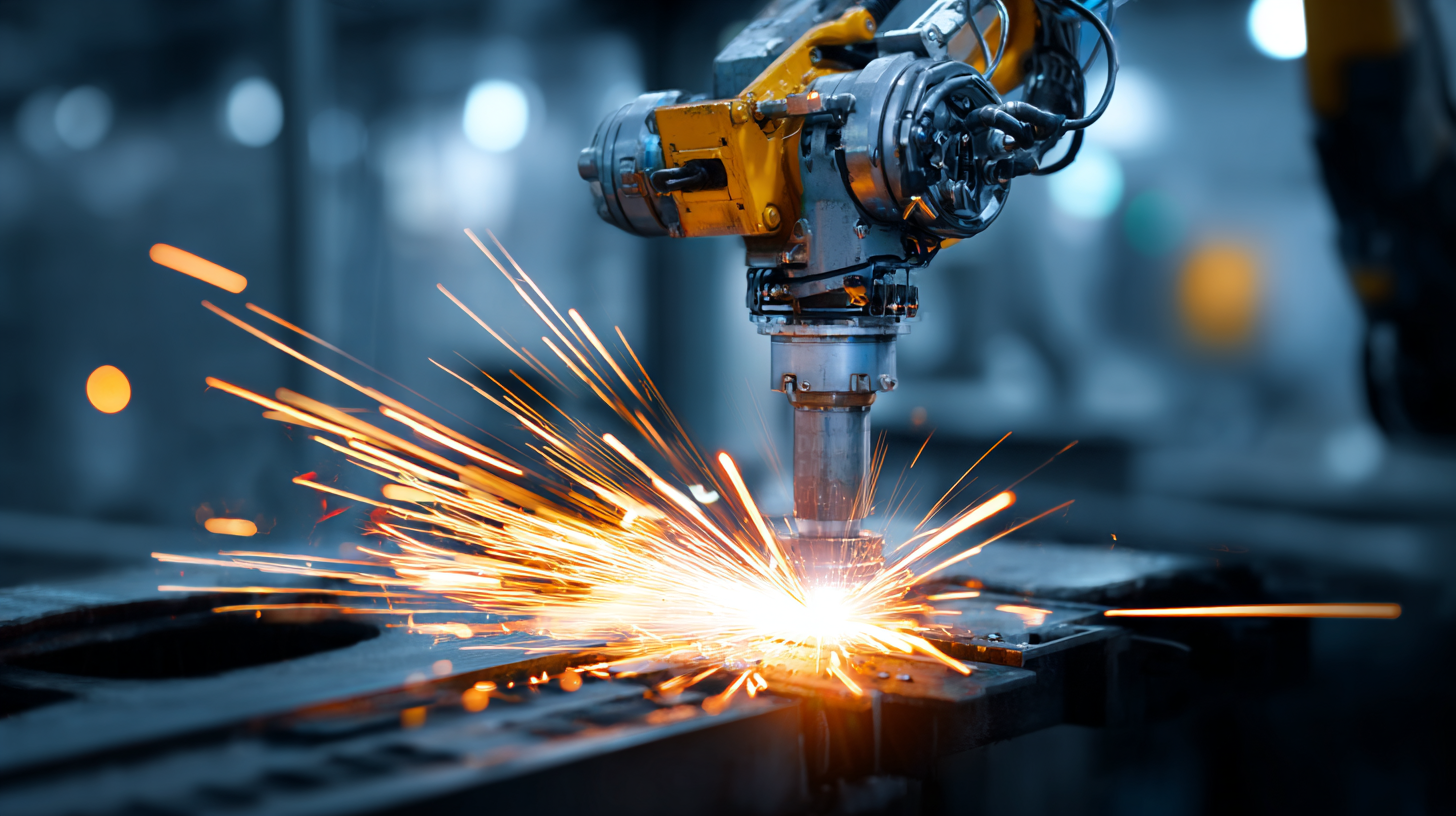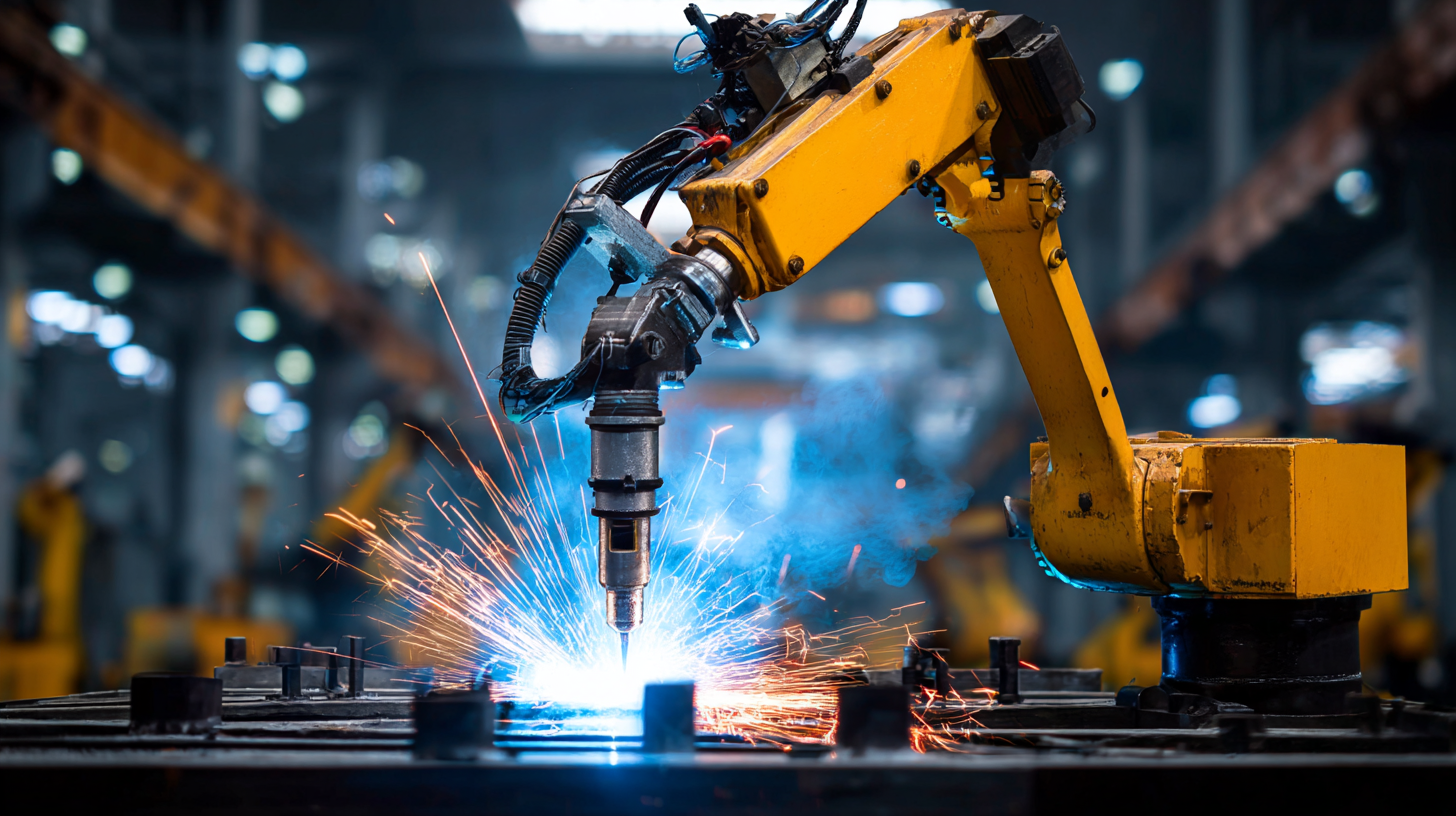Leave Your Message
-
Phone
-
E-mail
-
Whatsapp
In the ever-evolving landscape of industrial manufacturing, optimizing production efficiency is paramount. Robot Welding Consumables have emerged as a crucial component in enhancing operational effectiveness and driving down costs. According to a recent report by Allied Market Research, the global market for robotic welding is expected to reach $4.57 billion by 2027, growing at a CAGR of 7.5%. This surge is largely attributed to the increased adoption of automation technologies across diverse industries. The integration of high-quality welding consumables not only improves welding reliability but also significantly reduces defects and rework, contributing to lower overall production costs. As manufacturers strive to remain competitive, understanding the direct correlation between Robot Welding Consumables and productivity is essential for maximizing their return on investment and fostering sustainable growth in the manufacturing sector.

The impact of robot welding consumables on production efficiency is significant, as these advanced materials are specifically designed to optimize the welding process, enhancing both speed and quality. With the integration of robotic systems in industrial settings, production rates have surged due to the consistency and precision offered by these cutting-edge technologies. Robots equipped with high-quality consumables reduce downtime and defects, facilitating a more streamlined workflow. This not only boosts operational efficiency but also contributes to substantial cost savings, allowing industries to allocate resources more effectively.
Moreover, the ongoing development of AI-driven automation further amplifies the benefits associated with robotic welding consumables. By utilizing real-time data and predictive analytics, manufacturers can refine their processes, minimize waste, and ensure that the welding operation is as efficient as possible. This synergy between advanced welding materials and intelligent robotics addresses the industry's demand for greater adaptability and productivity, positioning manufacturers to meet the challenges of an increasingly competitive landscape. As a result, the modern industrial fabricator can achieve unprecedented levels of efficiency and sustainability through strategic investments in these technologies.

The welding consumables market is poised for significant growth, with projections indicating it will reach USD 34.9 billion by 2035, up from USD 20.3 billion in 2025. This expansion reflects the surge in automation and sustainable solutions across manufacturing industries. Advanced welding consumable technology is at the forefront of this transformation, facilitating increased efficiency and cost savings in production processes. By investing in innovative consumables, companies can not only improve quality but also optimize resource utilization in robotic welding applications.
To further enhance cost-efficiency in welding operations, companies can implement several strategies. First, regularly maintaining and upgrading welding equipment can minimize downtime and reduce the frequency of consumable replacements. Second, training staff on the best practices for using consumables effectively can prevent wastage and maximize their lifespan. Lastly, utilizing data analytics to monitor welding performance can help identify areas for improvement and streamline operations, ultimately leading to significant financial savings. As organizations embrace these advancements, the impact on both production rates and cost management will become increasingly evident.
| Category | Before Implementation | After Implementation | Improvement (%) | Annual Cost Savings ($) |
|---|---|---|---|---|
| Welding Speed (in inches/min) | 5 | 7 | 40% | 12,000 |
| Defect Rate (%) | 3 | 1 | 66.67% | 15,000 |
| Production Volume (units/hour) | 20 | 30 | 50% | 24,000 |
| Material Consumption (kg/unit) | 2.5 | 2.0 | 20% | 6,000 |
| Overall Cost Savings ($) | - | 57,000 | - | 57,000 |
The comparison of traditional vs. robotic welding consumables highlights significant advancements in industrial production efficiency and cost savings. Traditional welding methods often rely on manual processes and consumable materials that can be less effective, leading to longer production times and increased costs. In contrast, robotic welding utilizes advanced algorithms and high-quality consumables, which optimize the welding process. For example, studies show that implementing path optimization techniques, such as those derived from ant colony algorithms, can significantly enhance the efficiency of robotic welding in complex applications like plate heat exchangers.
Tips: Ensure to regularly assess your welding consumables to maximize performance. Selecting the right consumables for robotic systems not only reduces downtime but also improves the overall quality of welds. By investing in high-quality robotic welding consumables, companies can achieve greater accuracy and consistency, ultimately driving down costs associated with defects and rework.
Tips: Consider integrating AI technology into your welding processes. As traditional programming methods are becoming increasingly complex and costly, utilizing AI and machine vision in robotic systems can streamline operations. This shift not only allows for more adaptive and responsive welding processes but also enhances the reliability of production, ensuring that manufacturers remain competitive in a rapidly evolving market.
The choice of welding consumables plays a crucial role in determining the quality of the final product in industrial production. Using the right materials not only enhances the structural integrity of welded joints but also affects the overall aesthetic of the finished product. High-quality consumables can significantly minimize defects, such as porosity and inclusions, resulting in stronger, more reliable welds. This attention to detail can improve customer satisfaction and reduce costly rework or warranty claims.
Furthermore, advanced welding consumables are designed to perform efficiently across various applications, leading to a more streamlined production process. By selecting consumables that are optimized for specific welding techniques, manufacturers can increase deposition rates and reduce overall cycle times. This improved efficiency not only translates into higher output but also lowers the costs associated with labor and materials. Investing in the right welding consumables, therefore, aligns with a company’s goals of maximizing productivity while ensuring product quality remains uncompromised.
The market for robot welding consumables is poised for significant growth as industries seek to enhance production efficiency and reduce costs. The demand for various types of consumables, including welding rods, solid wires, flux-cored wires, submerged arc wires, and fluxes, is on the rise. Each type of consumable caters to different welding techniques such as arc welding, resistance welding, oxy-fuel welding, solid-state welding, and others, refining process precision and improving product quality.

The COVID-19 pandemic has substantially impacted the welding consumables market. Disruptions in supply chains and a slowdown in industrial activities shifted focus towards optimizing existing resources and fostering innovation. As industries adapt to these challenges, there is a noticeable trend towards advanced welding consumables that offer higher efficiency and better performance. Future developments are expected to emphasize eco-friendly materials and automation-friendly designs, aligning with sustainability goals and technological advancements. This evolution presents a unique opportunity for manufacturers to innovate and meet the changing demands of the industry.
